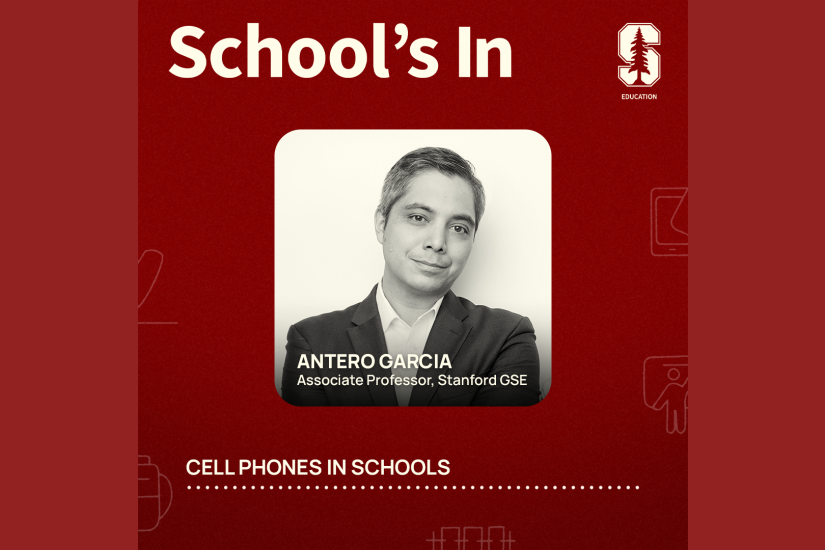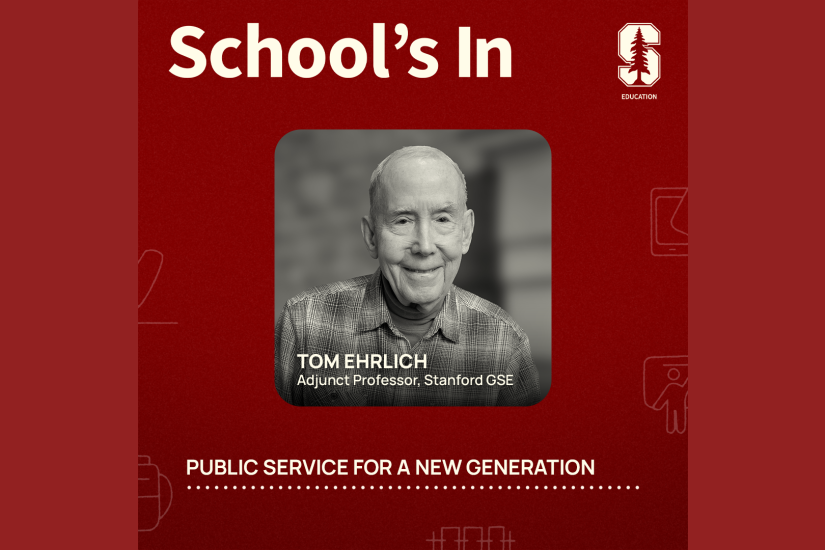
Stanford education students recommend expanded role for California’s extension schools
A student team in the Stanford Graduate School of Education is proposing to increase lifelong economic opportunity for more Californians by leveraging what it calls an under-tapped resource in the learning ecosystem: the state’s university extension schools.
Many good jobs in California remain hard to fill because demand outstrips the specialized training required, said Associate Professor of Education Mitchell Stevens, the students’ research supervisor in the GSE’s Policy, Organization and Leadership Studies (POLS) program. While not requiring a four-year college degree, these hard-to-fill jobs often require certification, Stevens said. They range from healthcare record coders to bioinformatics specialists and project managers.
“These jobs pay good salaries and improve people’s lives, but they require training that is insufficiently affordable or available to many working adults,” Stevens said. “This is the population most exploited by the for-profit education industry.”
Meanwhile, extension divisions affiliated with universities have for more than 150 years brought learning to their broader regions through classes, certificate programs and cooperative agricultural programs.
In an ongoing project, POLS students are exploring how University of California and California State University extensions can be empowered to serve more learners seeking 21st-century workplace opportunity.
This year’s cohort is writing a policy paper for Gov. Jerry Brown, UC and CSU leaders and foundation boards as part of Stevens’ Futures of Learning, Opportunity and Work (FLOW) project.
“The State of California has no policy of adult education in its Master Plan,” said Emeritus Professor Michael Kirst, an expert in higher education and president of the state Board of Education, who suggested the student project. “It’s mentioned just in passing.”
Nationwide, higher education leaders are pondering how to serve “nontraditional” students – working, over 25, with children or other dependents – who now comprise a substantial majority of learners beyond high school.
Rapid technological and social change impels them to seek learning throughout their lives. Kirst’s latest book, Higher Education and Silicon Valley: Connected but Conflicted, details the unplanned and often confusing educational landscape that has sprung up to serve them.
“It just evolved like Topsy,” Kirst said. “Nobody is thinking about it in an interrelated way.”
Brown’s fiscal 2019 budget includes $100 million to create a fully online statewide California community college. Another effort, the Online Education Initiative Course Exchange, aims to boost program completion by articulating community college units and requirements across the state.
The POLS project asks how adult learners can be served quickly and affordably through extensions’ existing infrastructure and historic mission.
“There are still questions that need to be answered before people in the higher-ed world can proceed knowledgeably,” said Sam Alavi, MA ’18. “Mike Kirst needed someone, or a group of someones, to say, ‘How about this?’”
The promise of extension schools
For more than generations, extension schools have focused on adult learners. The 1862 federal Morrill Act that created land-grant universities requires them to serve their broader communities through public programs such as cooperative agricultural extension. Private schools have followed.
Today, Stanford Continuing Studies hosts more than 600 offerings yearly. Other university extensions provide a range of regionally tailored programs from bioinformatics (San Diego State) to viticulture (UC Davis) to a masters’ in social work or a certificate in worker’s compensation law (CSU Bakersfield).
Many such programs are geared for people who already have degrees, but the POLS students think extensions can do much more.
“Extensions are built to be responsive,” said Grace Fowler, MA ’18. “They were built as a way for best practices to reach citizens with technology, opportunity and economic development.”
Fowler and classmates analyzed available data and found that of all public and private, profit and non-profit post-secondary education, university extensions are the most broadly successful at the qualities adult learners find desirable.
They share the prestige of their host universities, but with lower administrative costs. With less overhead, they can develop programs quickly in response to dynamic labor markets. They run nights and weekends to serve working people. They are priced for students to pay as they go.
“We think extensions, with their agility and responsiveness, can help resolve a dissonance between higher education and the workforce,” Fowler said.
The students’ policy recommendations include thinking of university extensions as a “fourth asset” in the Master Plan’s system of UC and CSU campuses and community colleges. They urge coordination among extensions, community colleges, foundations and other nonprofit organizations for workforce development initiatives.
The students also ask how extensions can adapt ideas from other education sectors. For example, they wonder if university extensions can tap into state workforce development funds for career training. They applaud efforts within another niche, the coding bootcamp industry, to publish graduate outcomes in a way that facilitates consumer comparisons.
The student recommendations further call for a research infrastructure for observing human capital development. They suggest that California’s extension schools begin longitudinal studies like those Van Ton-Quinlivan, MA/MBA ’95, has launched for the state’s community colleges in her role as vice-chancellor of workforce and economic development.
Finally, they urge the creation of a business council of large employers with changing workforce needs to help set targets for opportunity creation.
From research to practice
Fowler and Alavi both said the project greatly informed their future careers in higher education. They found working with Kirst, in particular, an illuminating opportunity.
“To sit in a room with someone with so much influence in higher education in California was really great,” said Alavi, who plans to return to her undergraduate alma mater, UC Davis, to “support public education.”
“It’s a little bit rare in academia to be 100 percent sure that what you’re doing is being used and has relevance outside the room,” Alavi said. “And that was very special.”
Stevens said he hopes the work will help persuade Californians to think of lifelong learning as a civic good worthy of public investment, as they did higher education in the mid-20th century.
“Part of the magic of the Master Plan was that it was an economic development plan and a civic project to build a new California,” Stevens said. “Who is responsible for the ongoing employability of adult Californians? We have the chance to nudge the narrative in the direction of a civic commitment.”

Master's students Grace Fowler, Zach Jue Lam, Sam Alavi and Joyce Marie Jones, all MA '18, are part of the POLS project. (Photo: Mitchell Stevens)



